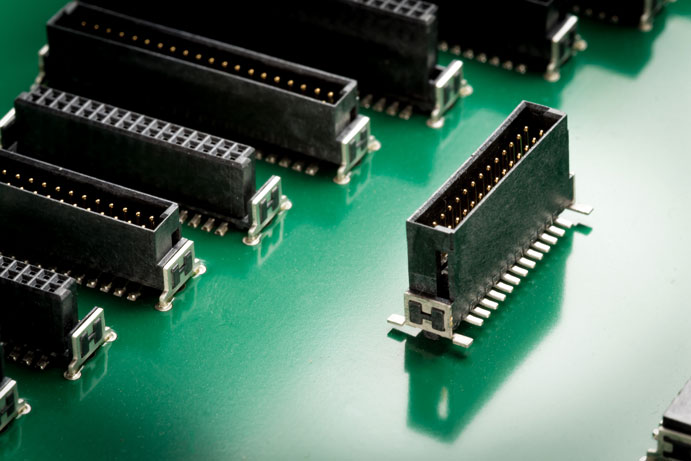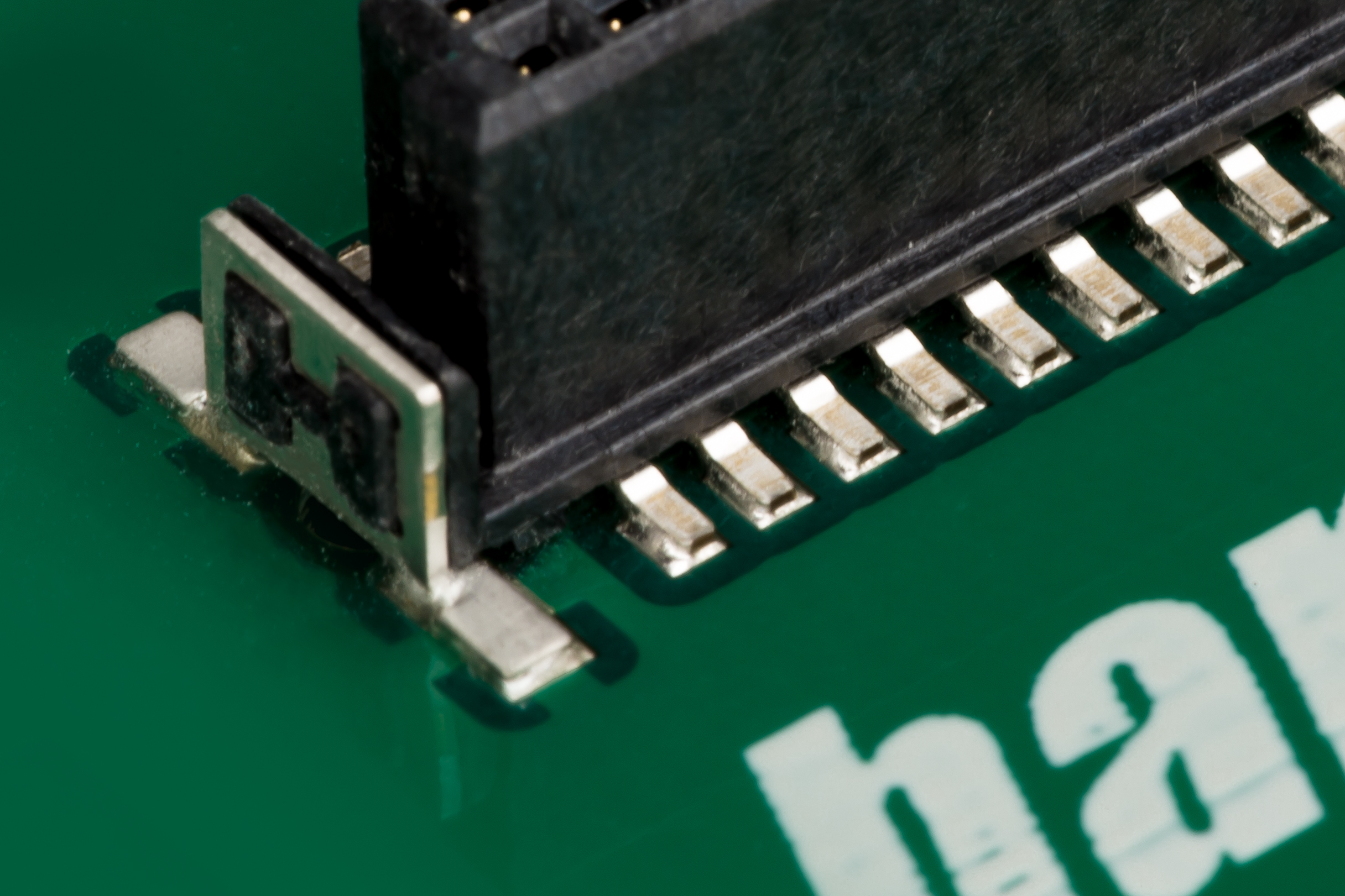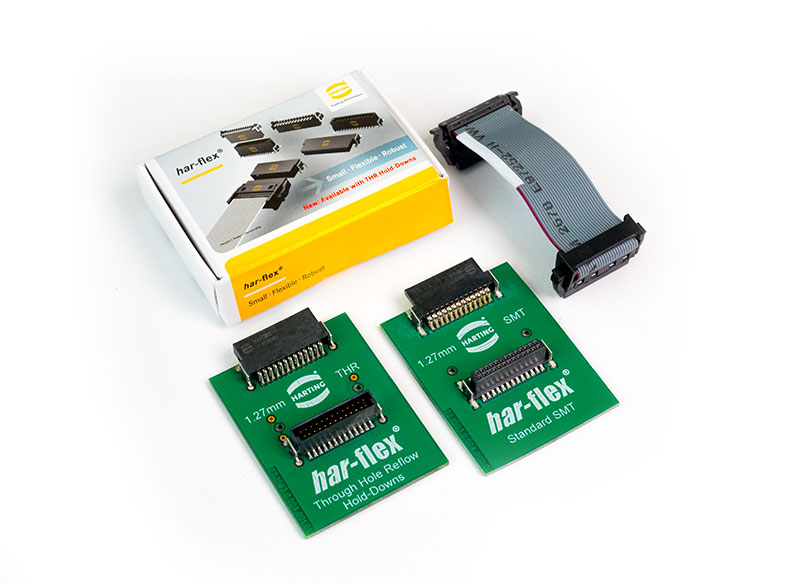New stacking heights for miniaturised PCB har-flex® connectors
With its new stacking heights, the har-flex® board-to-board connector series is always the best choice for optimally using space in PCB and device designs. They close the last gap in the har-flex® series for PCB clearances of 8 – 20 mm. The 1.27 mm pitch interface – with its unique variety of available pole numbers, fastenings, heights and reliable parameters for soldering – is always the best choice for your device.
HARTING has extended the har-flex® series with straight male (stacking height of 4.85 mm) and female (stacking height of 13.65 mm) connectors to provide the correct spacing for one or more PCBs within the device. These complete the product line and will, from the first quarter of 2019, enable board clearances from 8 to 20 mm. IDC ribbon cable assemblies are available to accommodate even larger PCB clearance spacing. This great variety is important because each application case is unique when constructing industrial devices. Each housing must accommodate different sizes, shapes and requirements. Hence, the circuit boards inside the device must always compensate for other spatial arrangements.
Each board must have a defined position for interfaces to the housing wall or for other electronic components. These vary depending on the device and use. In order to provide the necessary versatility, HARTING's har-flex® features a very small interface with a pitch of 1.27 mm. Depending on their application requirements, the user can select pole numbers from 6 – 100 pins, and can also decide whether the attachment should use SMT or additional solder posts. har-flex® fits in nearly every small application and is nevertheless very robust at the same time.
har-flex® pick&place is also suitable for use in increasingly automated production and can be soldered using the reflow soldering process. In order to support users with their processing, HARTING attaches great importance to absolute precision in its components.
Coplanarity should be mentioned in this context. Coplanarity describes how parallel and even signal contacts and holding pins in an SMD connector are aligned with each other, which is crucial for the subsequent quality of the solder joint. If signal pins deviate too much from each other, the connection can be of poor quality or faulty. To ensure good solderability, the coplanarity of all contacts is checked thoroughly during the production process.
This ensures high quality and that we meet our own demands on our interfaces. In addition to optical inspection to IPC-A-610 Class 3 standards, which rely on externally visible criteria such as wetting angle and filling level, HARTING laboratories also use sanding and X-ray technology to test the quality of solder joints.
In addition to the correct position of the contact pins, its coating is relevant for a good connection. Har-flex contacts are provided with a tin coating that melts in the reflow oven, thus creating a reliable connection with the solder pad. The wide variety, new heights and continual monitoring of our high quality standards make our har-flex® the perfect interface for printed circuit boards within the device.




